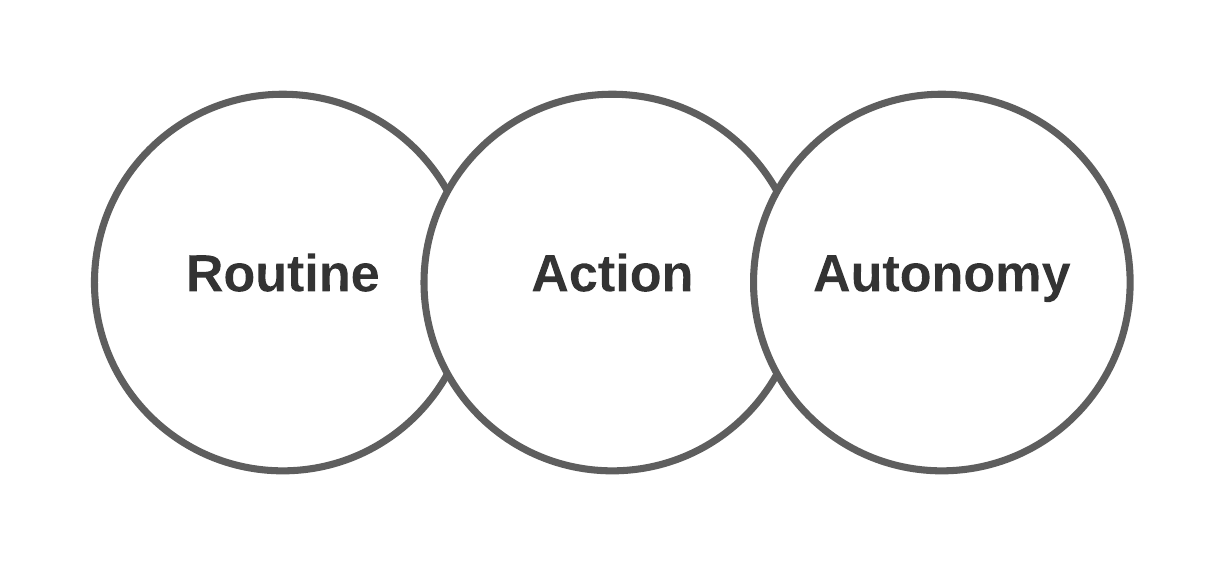Essentials for Every Student: Routine, Action, & Autonomy
In his famous 1953 essay, “The Hedgehog and the Fox,” British philosopher Isiah Berlin separated people into two distinct groups—hedgehogs and foxes. Foxes, wrote Berlin, are sleek, cunning creatures who try to use dozens of strategies to solve complex problems. Conversely, hedgehogs are simple and methodical creatures who integrate a unified, or principled, approach to problem-solving.
For parents and students alike, trying to navigate the distance learning environment and all of its complexities can feel especially challenging at times. Regardless of whether your approach to problem solving resembles the cunning of the fox, the principality of the hedgehog, or a hybrid of both, understanding how, and when, to implement the right mix of strategies will be a key factor to sustaining success in distance learning. For those who aren’t sure where, or how, to start coordinating their strategic route to success, utilizing the three key elements in, what I call, the Student Circles of Success, should provide you with a solid foundation.
Student Circles of Success
Establish A Morning Routine
According to BJ Fogg, Head of the Behavior Design Lab at Stanford University, developing effective habits is a key element in our ability to stay motivated and productive daily. One of the best ways to prime students for success, and begin to develop effective habits, is to establish a consistent morning routine.
The first, albeit sometimes most challenging, step to establishing a morning routine is sticking to a sleep schedule. Not only does sticking to a regular sleep schedule on weekdays and weekends help to regulate circadian rhythms and keep energy levels constant throughout the day, but also research shows that getting adequate sleep each night also improves memory and concentration during waking hours as well.
With a regular sleep schedule in place, the next step for creating effective morning routines is to have students establish their intentions for the day. Looking ahead at schedules for classes, tests, homework, and meetings allows them to have a clear understanding of what they need to accomplish. Also, previewing the day’s activities ahead of time may help to reduce stress, relieve anxiety, and reduce the tendency to procrastinate.
Create An Action Plan
Soichiro Honda, the founder of Honda Motor Co., once said, “Vision without action is a daydream, and action without vision is a nightmare.” For many students, simply previewing the day’s activities isn’t enough to keep them attuned to the many demands and challenges they’ll encounter throughout the day. However, creating detailed action plans that outline what needs to be accomplished in a given day or week allows them to attach tangible actions to their vision. For students who have difficulty navigating the demands of distance learning, or need additional support with their planning, organization, and time management, utilizing the services available through your school, such as our Upper School Learning Center at Westtown, can help them develop the skills they need to be successful in any learning environment. By showing students how to understand their unique learning profile, and teaching them strategies tailored to fit their needs, the learning specialists or teachers can provide students with the framework they need to create effective actions that will allow them to thrive in the classroom.
Make Room For Fun
New York Times bestselling author Daniel Pink lists the Four Ts of Autonomy—Time, Task, Technique, and Team — as being key factors for stimulating our intrinsic motivational drive. In a distance learning environment, where autonomy over the Four Ts is significantly limited compared to what students experience in brick and mortar classrooms, sustaining intrinsic motivation to achieve to their full potential can be especially challenging for some students. Therefore, to combat the woes associated with a lack of autonomy, students need to have something in their day they look forward to. Personal pursuits that aren’t tightly controlled or regulated —those which restore, rather than deplete, the Four Ts— are an essential component of mental, physical, and social-emotional health.Creating room for autonomy allows adolescents to feel like they have some sense of control over their environment which, in turn, feeds their intrinsic drive, and motivates them to engage in things they might otherwise not be so enthusiastic about.
Transitioning from a traditional classroom setting to a distance learning environment has presented a unique set of challenges that has caused students to break away from old productive routines that were developed and honed over years, and forced them into developing new habits on the fly. However, breaking old habits is hard, and creating new habits that stick is even harder. But by utilizing a cunningly simplistic approach, firmly rooted in the three core principles of Routine, Action, and Autonomy, students will develop, in time, the skills they need to be successful both in and out of the classroom.



